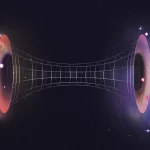Key Takeaways:
- Apophis, named after the Egyptian God of Chaos, is an asteroid that might come uncomfortably close to Earth in 2068.
- Recent observations reveal Apophis has accelerated due to the Yarkovsky effect, increasing the chances of an impact in 2068.
- Despite passing by in 2029 without incident, the asteroid’s trajectory for 2068 is still uncertain, with a potential collision scenario emerging.
- The Yarkovsky effect, caused by solar radiation, alters the asteroid’s orbit over time, making accurate predictions challenging.
- NASA’s DART mission in the near future aims to test methods to deflect asteroids, offering hope for preventing future collisions.
Pack your bags, Bruce Willis, because it looks like we might need some asteroid-deflecting heroes in the not-so-distant future. A recent report has stirred up some cosmic concern, suggesting that an asteroid with the rather ominous name Apophis, inspired by the Egyptian God of Chaos, could be on a collision course with Earth in the year 2068. This revelation comes courtesy of astronomers who have been diligently tracking Apophis and have noticed some alarming changes in its trajectory.
First spotted in 2004 by astronomer Dave Tholen and his team at the University of Hawaii, Apophis is no stranger to attention. Scheduled to make a close pass by Earth in 2029, during which it will become visible to the naked eye, the asteroid has always been a subject of interest for scientists and space enthusiasts alike. However, recent observations using the Subaru telescope have unveiled a troubling development: Apophis is picking up speed, drifting away from its expected gravitational orbit by approximately 170 meters per year. This acceleration, known as the Yarkovsky effect, introduces the unsettling possibility of a collision in 2068.
But what exactly is the Yarkovsky effect, and how does it influence Apophis’ path? Well, asteroids like Apophis absorb sunlight as they traverse through space. In order to maintain thermal balance, they emit this absorbed energy as heat, which in turn generates a force nudging them along and altering their trajectory over time. This phenomenon poses a significant challenge for scientists trying to predict the future movements of these celestial bodies.
Despite previous reassurances that Apophis posed no immediate threat during its 2029 flyby, the recent observations have cast doubt on its future intentions. While astronomers had initially ruled out a collision in 2068, the newfound acceleration has reopened the discussion, prompting a closer examination of potential scenarios. This uncertainty underscores the importance of ongoing monitoring efforts by space agencies like NASA, which continuously track and assess potentially hazardous objects like Apophis.
In response to this growing concern, NASA is gearing up for a groundbreaking mission aimed at testing asteroid deflection techniques. Scheduled for the near future, the Double Asteroid Redirection Test (DART) mission will involve redirecting a small spacecraft to collide with a tiny asteroid in a simulated attempt to alter its course. While this mission serves as a crucial rehearsal, it also holds the promise of providing invaluable data for developing strategies to mitigate the threat of rogue asteroids on collision courses with Earth.
In conclusion, while the prospect of an asteroid collision in 2068 might sound like something out of a sci-fi movie, it’s a scenario that scientists are taking seriously. With ongoing observations and innovative missions like DART, efforts are underway to better understand and potentially avert this cosmic collision course. So, while the fate of Apophis remains uncertain, one thing is clear: the future of asteroid defense is taking shape, and humanity is ready to meet the challenge head-on.


